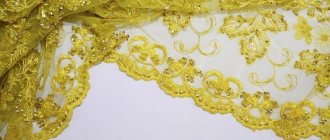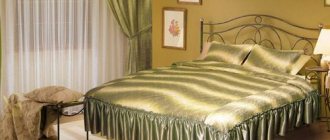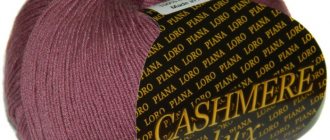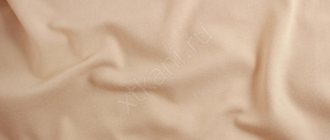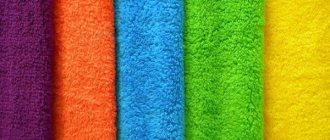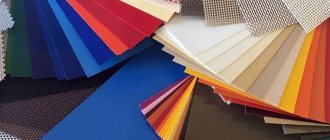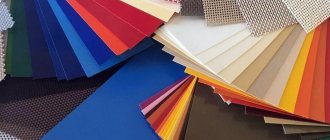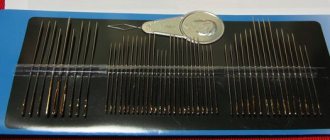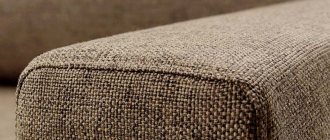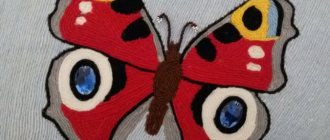What type of fabric is this
Tartan designs consist of horizontal and vertical stripes or rectangles filled with diagonal stripes. The patterns are called Scottish tartans, so the second name for the material is tartan.
Tartan fabric colors
Tartan is produced on looms from wool, cotton, wool blend, and mixed yarn. The fabrics are made from a set of dyed threads using the twill weave method. The weft and warp threads are connected asymmetrically, for example, the weft overlaps 3 warp threads. The type of ornament depends on the color and number of threads.
Textiles on which checkered patterns are applied after production are also considered tartan. Drawings are used to cover finished synthetic fabrics.
Origin story
According to the Collins Explanatory Dictionary, the name tartan comes from Old French words denoting Tatar or coarse wool blend fabrics. Ancient textile made from undyed sheep's wool, reminiscent of tartan, discovered in the salt mines of Hallstatt (Austria).
Archeology professor E.W. Barber believes that the material was made in the 8th-4th centuries BC. Tartan-like textiles made in the 3rd century BC found in Scotland. Textiles covered a clay pot containing Roman coins.
Dyed with natural dyes, twill-weave wool fabric originated in Scotland in the 16th century. Men's national clothing was made from it. Kilts (Scottish skirts) have become a symbol of the Scottish Highlanders.
In the Victorian era, the royal family was fond of tartans. Checked clothing has become popular in Europe. Mass production of tartan began in the second half of the 19th century.
How to wear checkered items?
Currently, pepita has become one of the most popular patterns. Along with classic suit and dress fabrics in small black and white checks, you can find other color combinations, increased check sizes, the use of pepita as a background for other prints, etc. Textiles of this type can have any composition, and a design is most often printed on it. Non-woven materials with such patterns are also very popular. In addition to traditional knitwear, for which the jacquard technique is used, the characteristic check with curls can be seen on fur products (including natural ones), shoes, bags and other accessories.
Such items allow you to create an unusual look without going beyond restrained elegance; they are also ideal for patchwork and original pattern combinations. However, it should be remembered that if you are not a professional stylist, then it is better to adhere to the rule that you should wear no more than one checkered item. This could be a dress or coat with monochromatic additions, or a checkered bag that enlivens a business suit. The black and white color scheme of the image suits the classic and formal style, the combination of pepita with pink or peach looks very romantic, and the red or bright blue background creates a very bright, but at the same time elegant and stylish look.
View entry
As for the classic small-sized black and white check, then, along with houndstooth, it is one of the universal colors that suits any body type. Unlike many varieties of tartan, it hides excess volume and does not require joining when sewing, so it can be used for a wide variety of models, including trousers of any style. It is an ideal choice for any clothing styles such as:
- office;
- classical;
- vintage;
- retro;
- preppy;
- casual;
- boho chic;
- romantic, etc.
In addition, a small addition in the “pepita” style, for example, a scarf or shoe insert, will organically fit into any look, including a club or avant-garde one, giving it a special twist.
Types of fabric
According to their intended purpose, materials are divided into:
- Dresses for blouses, shirts, dresses, skirts. Made from cotton or cotton with synthetic additives.
- Costumes for jackets, suits. Made from wool, wool mixture.
- Coats made of wool with synthetic additives.
- Synthetic based on polyester for school uniforms, outerwear, home textiles.
Materials are also divided according to ornaments. The register of Scottish tartans contains more than 3 thousand designs.
Famous tartans:
Royal Stewart
Red material with cells of white, blue, yellow stripes
Blackwatch
Cells of green, blue, gray stripes
Glencheck
Black and white rectangles and squares formed by graphic patterns
Burberry
White, red, black stripes on a sand background
Learning to understand the names of plaid fabrics
Plaid is one of the trends of the season. Agree, there are a lot of types of checkered prints. Let's figure out what the main types of plaid fabrics are called. The most famous, perhaps, is the Burberry check.
The official year of birth of the cell is 1924.
Trench coats, invented by Thomas Burberry, quickly gained immense popularity on the eve of the First World War. Straight, waterproof coats, knee-length, tied with a belt, were originally intended for soldiers, but were liked by many. And with them comes the checkered pattern, because to create the lining they used a pattern of four colors: black, white, sand and red. Check "Vichy" In 1850, in the French town of Vichy, local weavers invented a special type of check - "Vichy". This is a small cell, mainly of two colors (one of which is most often white).
Initially, Vichy checks were used for bed linen, but gradually the pattern became increasingly popular and over time moved to napkins, tablecloths, upholstery, curtains and bed canopies. And of course, this check is definitely associated with Provence and Country style. It was this kind of check that French fashion designer Jacques Esterel used when creating Brigitte Bardot's wedding dress in 1989.
And in English-speaking countries such a cell is usually called Gingham. Tartan The most famous tartan garment is the Scottish kilt. The word “tartan” literally means “pattern”.
1. “Caledonia” is a universal tartan that every Scot can wear 2. “Black Watch” is a military tartan that became the basis for many clan tartans, such as “Gordon” and “Campbell” 3. “Dress Campbell” is the ceremonial tartan of Clan Campbell 4. “Burberry” - tartan created for the company in 1924 5. “Dress Gordon” - an elegant version of the Gordon clan tartan 6. “Royal Stewart” - the most famous tartan in the world, considered the personal tartan of Elizabeth II
At first, the tartans that were woven in Scotland did not have any special name or meaning. They were woven from a certain set of threads, dyed with dyes obtained from local plants and fruits. It is certain that tartans were woven and distributed in the surrounding area. Therefore, each area had its own colors, determined by local dyes.
The fashion for tartan was introduced by none other than Queen Victoria of Britain, who adored “everything Scottish.” It was she and her husband Albert who came up with the idea of decorating their residence with checkered decorative fabrics. Since then, English society has become obsessed with the checkered print.
Queen Victoria And the classic tartan of the English aristocracy is the Glen Urquhart Check.
The birthplace of this tartan is the land of Urquhart Castle, which is located near Loch Ness.
And if another large check of a contrasting color is superimposed on it, then this tartan is called “Prince of Wales” (Windsor check). At the beginning of the twentieth century, it was brought into fashion by Edward VIII, Prince of Wales, who was distinguished by his original fashion preferences and showed remarkable courage in creating his own style. It was thanks to him that the check became a fashionable pattern and turned into one of the classic patterns in men's clothing.
Wallis Simpson and the Prince of Wales Remember this famous love story, for which the Prince gave up the throne to marry his beloved? But we digress. But he brought into fashion not only the Windsor check, but also the Argyle pattern.
The Argyle pattern is inextricably linked with the name of Robert Pringle, who founded the Pringle of Scotland company in 1815. For the first hundred years it was engaged in the production of knitted underwear and stockings. It was she who introduced the diamond pattern into world fashion. Argyle reached its peak of popularity after the First World War. Still would! After all, Edward VIII, Prince of Wales, began wearing Pringle of Scotland products while playing golf. Until the 1930s, Argyle adorned the least visible item of clothing—socks. And in the 1930s, it began to be used in the production of knitted clothing. By the 50s of the twentieth century, Pringle of Scotland reached the peak of popularity and became a cult brand. It is worth noting that classic tartans are usually made from wool fabric. But what about cotton fabrics? Shirts from which are so popular now.
If the predominant colors are red, black, green (the colors of classic tartans), then of course this color can be called a tartan. And if the colors are bright, yellow and blue predominate, plus large-sized cells with an asymmetrical composition, then this fabric is called Madras - in honor of the large industrial city of India where it began to be produced.
And finally, “Chicken foot”, “Hose foot”, “Dog tooth”. In its modern form, “hound’s foot” took shape only in the 19th century.
The pattern got such a strange name for very simple reasons - its ornament really looks like the front fangs of a dog or the prints of a goose's paws. If the pattern is smaller, then it is a “chicken foot”. Larger ones are “goose tooth” or “dog tooth”. Fabrics with such a pattern were brought into fashion by none other than Coco Chanel in the 20-40s of the 20th century.
Source Source Source Source Source
Pros and cons of fabric
Advantages of tartan:
- spectacular;
- wear-resistant, strong, durable;
- retains heat, protects from wind, warms;
- breathable, hygroscopic;
- soft;
- elastic;
- holds its shape well;
- Can be cut on the bias.
Flaws:
- it is difficult to combine drawings when cutting;
- careful care is required;
- Needs moth treatment.

